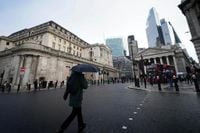UK inflation has once again surged, with consumer prices rising faster than economists and policymakers had anticipated, casting a shadow over hopes that the worst of the cost-of-living crisis might finally be behind British households. According to the Office for National Statistics, consumer prices in July 2025 climbed by 3.8 percent compared to a year earlier, up from 3.6 percent in June. This marks the fastest pace of inflation since January 2024, a worrying sign for families and businesses already feeling the pinch from months of rising expenses. The Bank of England (BOE) had forecast this uptick, but even their projections were slightly outpaced, as most economists had predicted a 3.7 percent increase.
The details behind these headline numbers reveal a more troubling picture. The jump in inflation was driven primarily by a rise in the cost of essentials—energy, petrol, and food—all of which have seen sharper increases than in previous months. The Resolution Foundation, a leading think tank, highlighted that energy price inflation almost doubled, leaping from 4.5 percent in June to 8 percent in July. Petrol prices also edged up, climbing by 2 pence per litre over the month. Food inflation, meanwhile, increased from 4.5 percent to 4.9 percent, outpacing the BOE’s forecast and putting further strain on household budgets.
Perhaps most striking are the surges in some staple grocery items. Beef prices soared by 24 percent in July, while both butter and coffee saw inflation rates of 18 percent. Chocolate, a small comfort for many, was not spared either, with prices up by 17 percent. These increases in food costs are particularly concerning given the broader context: food bank usage has jumped by 32 percent compared with 2021-22, underscoring the pressure on lower-income families and the growing reliance on charitable support to meet basic needs.
Services inflation—a closely watched measure of underlying price pressures—also climbed to 5 percent, slightly above the BOE’s forecast of 4.9 percent. This uptick in services, which includes everything from haircuts to train tickets, suggests that inflation is becoming more entrenched across the economy, rather than being limited to a few volatile sectors.
The British pound reacted to the news with a momentary dip before stabilizing, trading little changed at $1.3502 after the report was released. While this might seem like a minor detail, it reflects the market’s uncertainty about the direction of UK monetary policy and the broader economic outlook.
The BOE itself faces a delicate balancing act. In August, policymakers cut interest rates by a quarter point to 4 percent—a move that was hotly debated within the central bank. Governor Andrew Bailey warned at the time of “genuine uncertainty” about what might happen next. The latest inflation data does little to settle that debate. With inflation running higher than expected and the cost of essentials spiraling, there is now fresh speculation about whether further rate cuts are on the horizon or if the BOE might have to pause or even reverse course to contain price pressures.
James Smith, Research Director at the Resolution Foundation, summed up the sentiment in a statement: “UK inflation looks increasingly like an international outlier as CPI stepped up again in July to reach 3.8 percent, a nineteen-month high, with a worrying increase in the inflation rate of essentials.” Smith added that the rising cost of food is especially troubling for families, coming on the heels of a period of steep increases in the cost of basics and rising food-bank use. He also noted, “But it is also bad news for mortgagors, as it will most likely slow the arrival of future rate cuts.”
Indeed, the UK now holds the dubious distinction of having the highest inflation rate in the G7, making it an outlier among major economies. While some countries have seen inflation moderate or even decline, the UK’s persistent price pressures suggest that the path back to more stable prices could be a long one.
There is a small silver lining in the latest figures. The rise in energy-price inflation was partly driven by the way past price falls have dropped out of the twelve-month calculation. In real terms, energy prices actually fell by 3.8 percent between June and July, offering a modest reprieve for some households. However, this technical quirk does little to offset the broader trend of rising costs across the board.
The outlook for living standards remains challenging. While regular-pay growth stood at 5.0 percent in June, this was down from 5.5 percent a year earlier. With inflation expected to rise to 4 percent in the coming months, real-wage growth is slowing sharply, meaning that pay packets are struggling to keep up with the cost of living. For many, this translates into tough choices at the checkout and an ever-tighter squeeze on household finances.
For the BOE, these developments complicate an already fraught policy environment. The central bank must weigh the risks of cutting rates too quickly—potentially fueling further inflation—against the danger of keeping borrowing costs high and stifling economic growth. Governor Bailey’s warning of “genuine uncertainty” now seems particularly prescient, as policymakers grapple with data that points in conflicting directions.
Meanwhile, the political and social implications of rising inflation cannot be ignored. With food bank usage at record highs and essentials becoming ever more expensive, pressure is mounting on the government to provide additional support for vulnerable households. At the same time, businesses are facing higher input costs, which could eventually feed through to even higher prices for consumers.
As the UK heads into the autumn, all eyes will be on the next set of inflation data and the BOE’s response. The hope is that price pressures will ease and that real wages will begin to recover. But for now, the combination of surging essentials, slowing wage growth, and policy uncertainty means that the cost-of-living crisis is far from over.
In the end, the latest inflation figures serve as a stark reminder that, for many in Britain, economic recovery remains elusive and the road ahead is likely to be bumpy.




